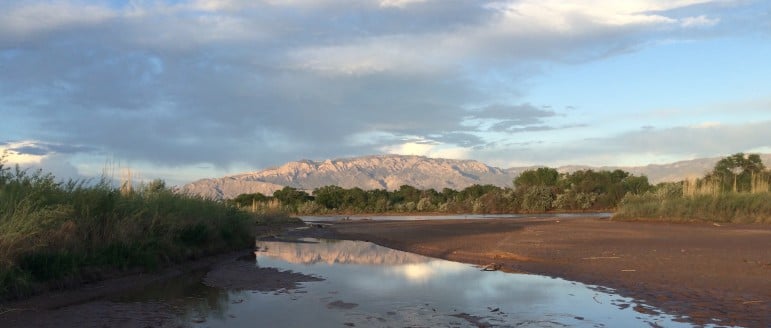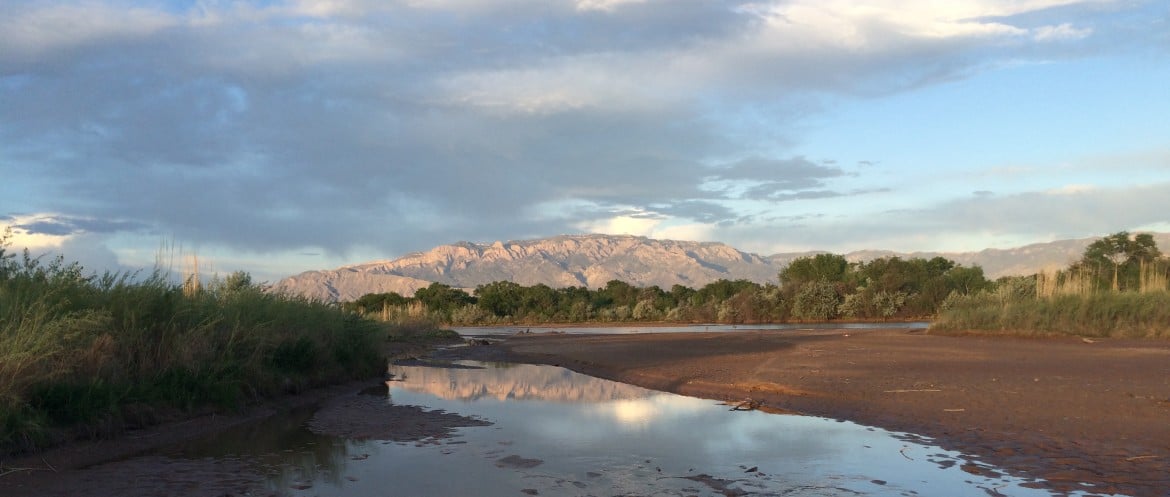 Interdependence. That’s the word my mind alights on when I think of New Mexico’s natural environment and its cultures and economies. The health of our waterways and forests are intertwined with our families and businesses.
Interdependence. That’s the word my mind alights on when I think of New Mexico’s natural environment and its cultures and economies. The health of our waterways and forests are intertwined with our families and businesses.
That’s why reporting on climate change is important. Yet, such journalism remains sparse, both nationally and locally. In this era of media transformation, cash-strapped newsrooms struggle to produces stories that explore the connection between climate change and issues with which our communities grapple –drought, water access, fire hazards, dust storms – to name a few.
This is why last fall we launched At the Precipice: New Mexico’s Changing Climate with long-time independent environmental journalist Laura Paskus.
Over the past several months, Laura has examined the impacts of warming on wildlife and water and analyzed whether the governor’s energy plan tackles the right issues or not. She’s also reported how the state Legislature cut funding for scientists studying drought and economic vulnerabilities. And showcased how grassroots communities of faith are responding to climate change and how the Earth’s warming significantly impacts the state’s forests. Did I mention she’s also creating a New Mexico climate map?
Here are a few highlights from her stories to give you a taste of what you can find in her reporting:
“Fire is inevitable,” forester Dennis Carril said, adding, however, that fires such as Los Conchas, which burned more than 156,000 acres in 2011, aren’t normal. But we’ll keep seeing more of them.
“The impacts of climate change are really clear in the Southwest right now. There is very noticeable warming, and it is greater than the global average warming,” said Jonathan Overpeck, co-director for the University of Arizona’s Institute of the Environment and professor in the university’s Geosciences and Atmospheric Sciences departments.
“New Mexico is like a microcosm for the world. There is a lot of poverty, but it is resource-rich. We provide cheap labor for industry, then suffer the pollution,” said Javier Benavidez, Executive Director of SouthWest Organizing Project.
“I just don’t think, as a country, that we have our act together about what to do, when to do it, and how to do it,” said Bob Gallagher, who directed the New Mexico Oil and Gas Association for a decade and today has his own energy consulting firm.
“The warm spring temperatures are one of the clearest observed climate change signals in North America,” said David Gutzler, a professor in the University of New Mexico Earth and Planetary Studies Department and one of the lead authors of the Intergovernmental Panel on Climate Change’s 2013 Assessment Report.
“The possibilities are extraordinary,” but New Mexico is resisting changes that will allow solar and wind to become a greater part of the state’s mix, Positive Energy Solar CEO Regina Wheeler said.
New Mexico In Depth’s goal with the New Mexico’s Changing Climate project is to inform and engage New Mexicans on the issue of how climate change is affecting New Mexico.
But to be honest, we’re cash-strapped too. We’re supporting Laura’s reporting with a monthly stipend. But it’s nowhere near what she needs to cover the travel costs of visiting New Mexico’s rural communities or to see first-hand what’s happening to rivers and landscapes or to take deep dives into public records.
We’d like to change that, which is why we’re writing to you.
So you know, in the coming months we’ll have more informative stories for you to read.
For instance, what does it mean for New Mexico communities still grappling with the legacy of radioactive contamination left by the 20th century uranium mining industry that the federal Clean Power Plan categorizes nuclear energy as clean? The same question applies to southeastern New Mexico communities with their burgeoning nuclear energy economy.
A little about the reach of our stories
Our stories run on our website. We also provide them free-of-charge to our media partners, which includes several newspapers around the state and the NPR and PBS affiliates in Albuquerque and Las Cruces. Our goal is to get them in front of everyday New Mexicans. We also promote them through social media and e-mail them to more than 4,000 New Mexicans.
Your sponsorship matters
You’ll be publicly thanked on our website, and acknowledged in our annual special edition focused on the state’s legislative session.
Will you invest in creating this body of work, which is pushing the climate change discussion to the fore, where it belongs? For as little as $25 you can make a significant impact.
If you’ve already donated—or you plan to—please share this project with your friends and ask the to do the same.
This work matters. Let’s keep it going.
